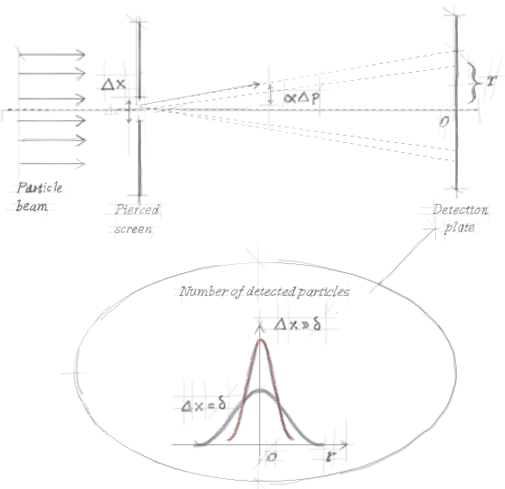
Figure 2. The diffraction pattern displayed by the particles in the slit experiment. The spread is larger when the slit is narrow (red curve) than when it is wide (blue curve).
With the help of Heisenberg's relations, we can easily interpret these results in terms of the classical concepts of ‘particle’ and ‘trajectory’ (which, as we argue in the section on implications, should be used with caution when dealing with quantum phenomena). Consider for example the case of a narrow slit, and call t the instant at which the particle is expected to pass through the slit. In order to arrive at the detection plate, the particle has to pass through a small hole: its radial coordinate at time t is therefore precisely determined. In other words, the slit acts as a filter which selects only those particles whose radial position lies within a small region. According to Heisenberg's relations, for these particles the uncertainty on the transversal velocity (i.e. the components of the velocity vector parallel to the screen) at time t is large. Indeed, the narrower the slit, the larger the transversal velocity can be. Because of its velocity, each particle deviates from the axis while flying between the slit and the detection plate, and is finally detected on the plate somewhere in a circle whose radius is inversely proportional to the slit amplitude (compare the red curve with the blue one in the picture).Experiments of this kind have been carried out since the Sixties with neutron beams. Nowadays relatively big molecules are being tested as well.